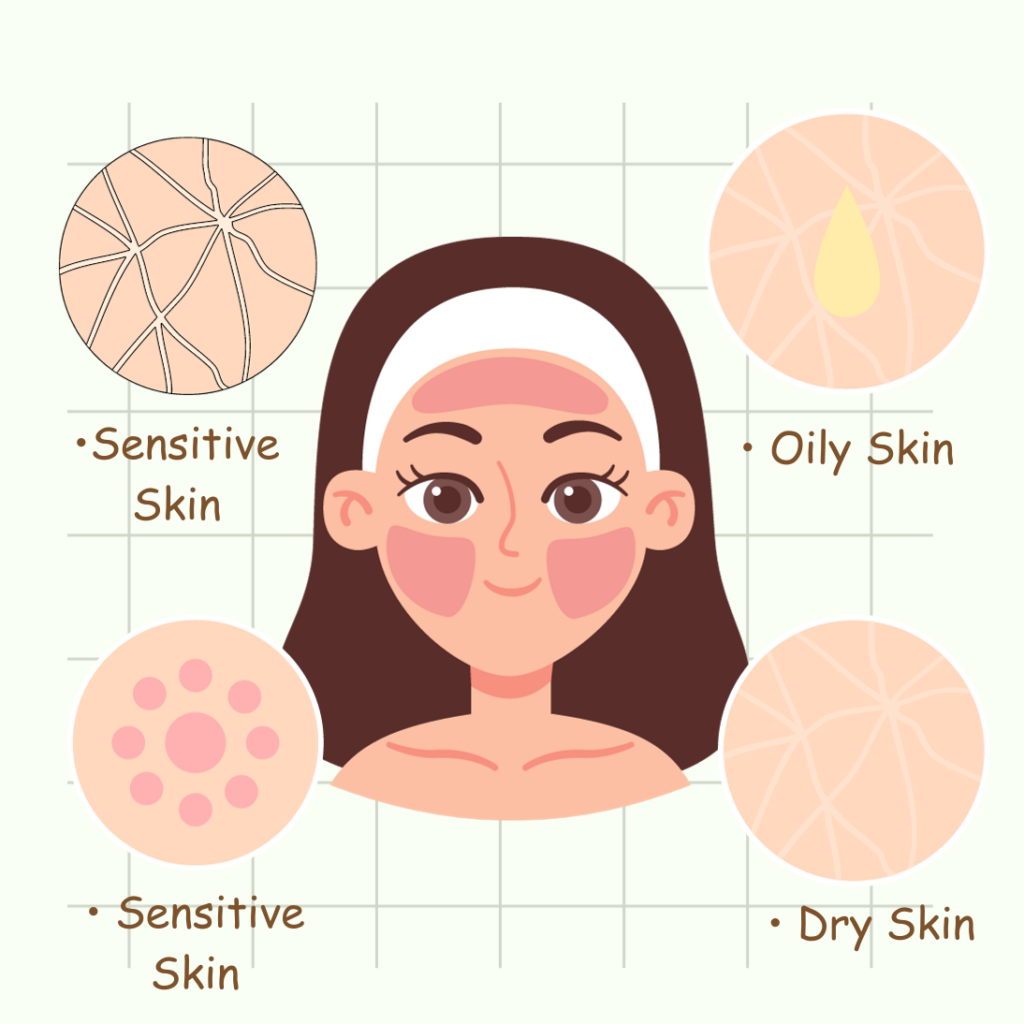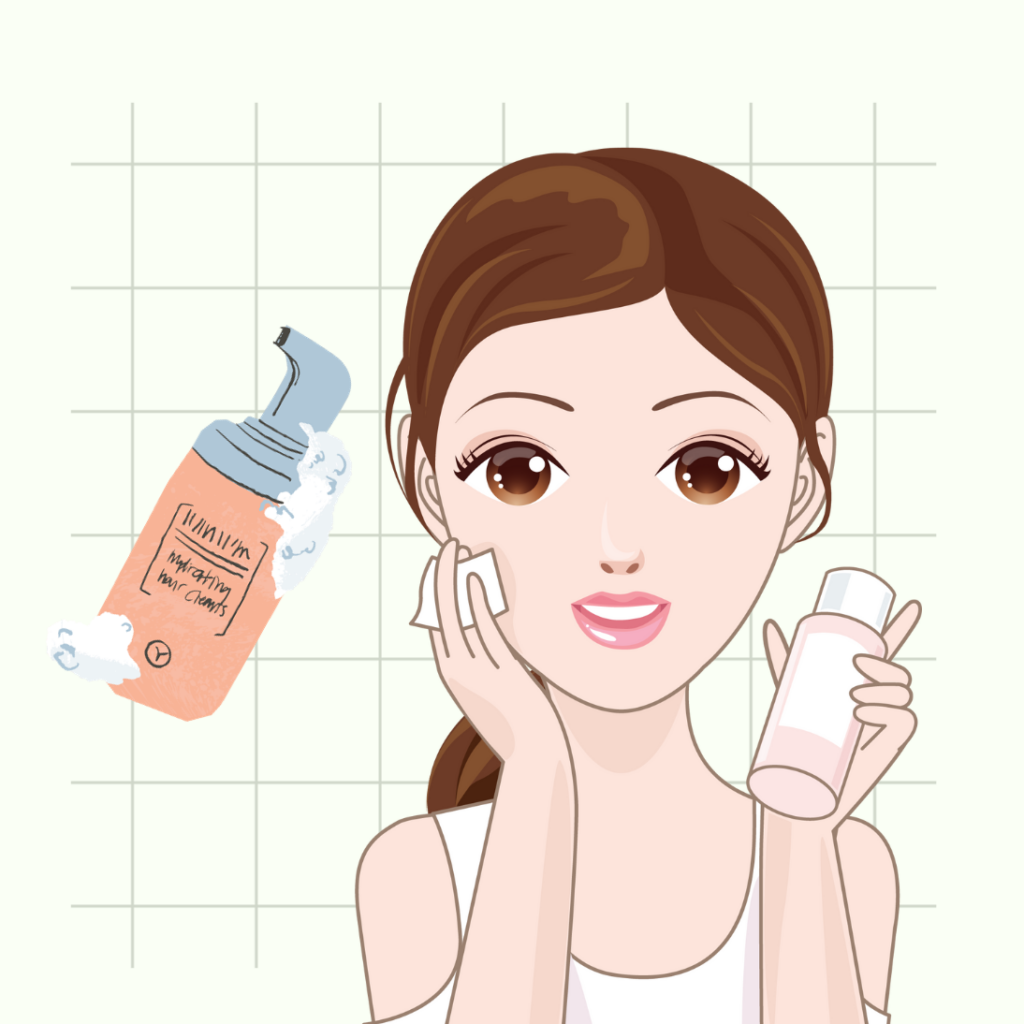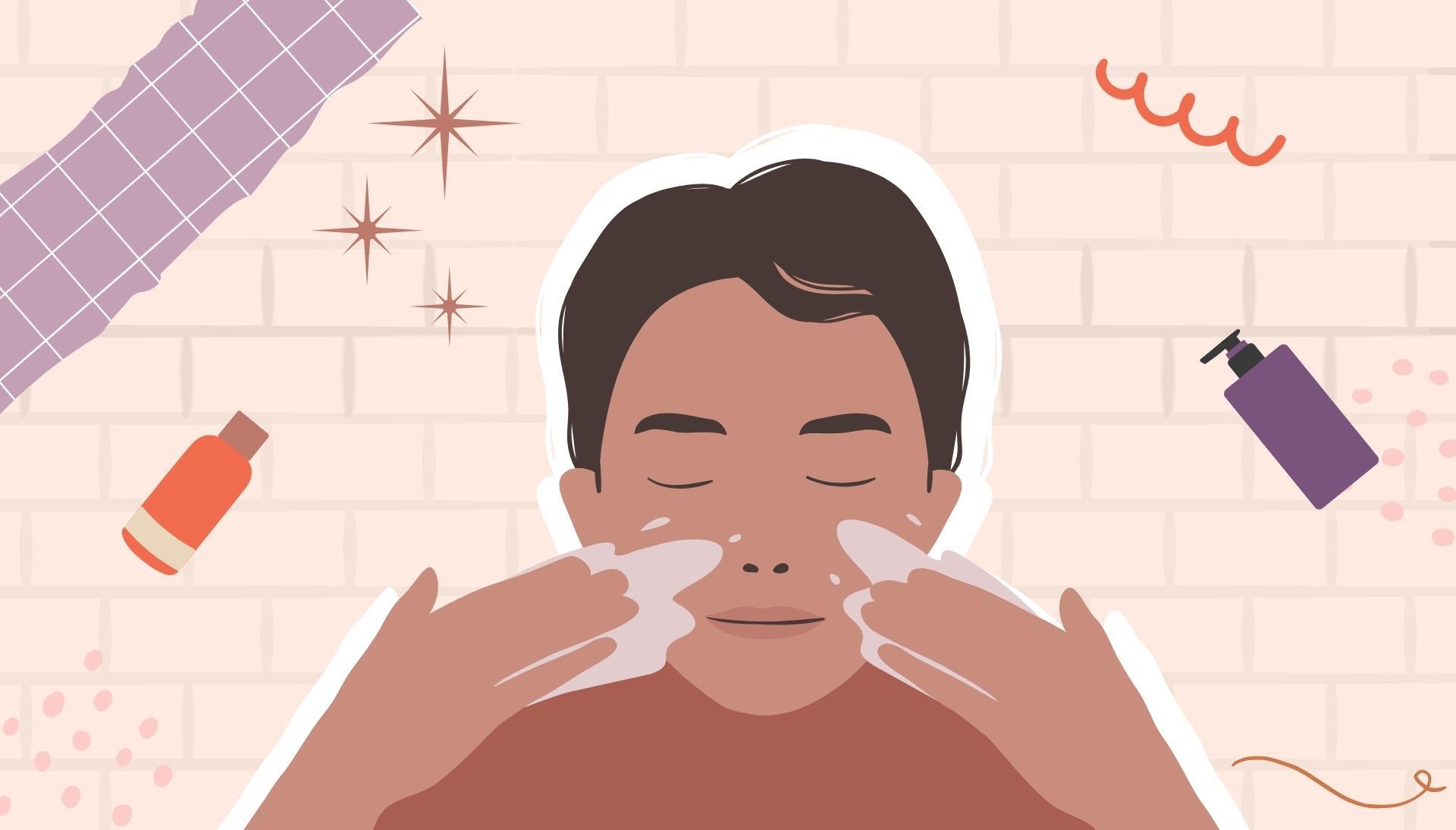Table Of Contents
Introduction
Welcome to our ultimate guidance on crafting a skincare routine for hyperpigmented skin. First, we’ll start by understanding hyperpigmentation, including its types. Next, we’ll assess your skin’s needs, considering your skin type and hyperpigmentation severity. Then, we’ll dive into building a hyperpigmentation-busting routine, exploring cleansing, exfoliation, and the magic of brightening ingredients. Finally, discover the role of serums and spot correctors before we unveil sun protection, your hyperpigmentation savior, with insights on SPF and choosing the right sunscreen.
Understanding Hyperpigmentation
Hyperpigmentation is a common skin condition characterized by darkened patches or spots on the skin. This occurs because the skin produces an excess of melanin, the pigment responsible for skin color. Such as sun exposure, inflammation, and hormonal changes can trigger hyperpigmentation. There are various types of hyperpigmentation, including melasma, post-inflammatory hyperpigmentation (PIH), sunspots, age spots, and freckles. Understanding the type of hyperpigmentation you have is essential for effective treatment and prevention. Therefore, we will delve deeper into each type and offer insights on how to manage and address hyperpigmentation for a more even and radiant complexion.
What is Hyperpigmentation?
Hyperpigmentation refers to the darkening of certain areas of the skin compared to the surrounding skin tone. It occurs due to an overproduction of melanin, the pigment responsible for skin color. In addition, it is triggered by various factors, with the most common being sun exposure and skin inflammation. For instance, when your skin is exposed to UV rays, it often responds by producing more melanin to protect itself. Therefore, you might notice those pesky sunspots after a summer vacation. Skin inflammation, on the other hand, can be caused by acne, eczema, or injury, leading to post-inflammatory hyperpigmentation (PIH).

Types of Hyperpigmentation
Hyperpigmentation is not a one-size-fits-all condition; it comes in various forms, each with its own characteristics, such as
- Melasma: Melasma is perhaps one of the most well-known types of hyperpigmentation. It typically appears as brown or gray-brown patches on the face, especially on the cheeks, forehead, and upper lip. Hormonal changes, such as those during pregnancy or when using birth control, can trigger melasma.
- Post-Inflammatory Hyperpigmentation (PIH): PIH occurs after skin inflammation or injury, leaving behind dark spots or patches. Thus, it results in conditions like acne or even a minor cut.
- Sunspots (Solar Lentigines): Sunspots are the result of excessive sun exposure. However, they appear as small, flat, dark spots on sun-exposed areas like the face, hands, and arms.
- Age Spots (Liver Spots): These are similar to sunspots but tend to develop as you age. They are usually harmless but they can be aesthetically bothersome.
- Freckles: While freckles are often associated with genetics, they are also a form of hyperpigmentation. Notably, they are usually small, brown spots that become more prominent with sun exposure.
Understanding the different types of hyperpigmentation is crucial because each may require a different approach to treatment and prevention. For instance, if you’re dealing with melasma, PIH, sunspots, age spots, or freckles, a well-thought-out skincare routine can help address these concerns effectively.
Assessing Your Skin’s Needs
This process involves two critical aspects: analyzing your skin type and evaluating the severity of hyperpigmentation. Identifying your skin type—whether it’s oily, dry, combination, or sensitive—lays the foundation for tailored skincare. Similarly, gauging the extent of hyperpigmentation helps you determine the level of care needed. By connecting these assessments, you can craft a personalized skincare routine that addresses your skin’s needs precisely. To demonstrate, we’ll explain how to navigate these assessments and create a regimen that paves the way for healthy, radiant skin.
Skin Type Analysis
Your skin type serves as the foundation for building an effective skincare routine. There are generally four main skin types: oily, dry, combination, and sensitive. Thus, each type requires tailored care to address its specific characteristics, such as
- Oily Skin: If your skin often feels greasy, especially in the T-zone (forehead, nose, and chin), you likely have oily skin. It tends to be prone to acne and may have enlarged pores.
- Dry Skin: Dry skin often feels tight, rough, or flaky. It can be sensitive and is prone to redness and fine lines due to a lack of moisture.
- Combination Skin: Combination skin exhibits characteristics of both oily and dry skin. The T-zone can be oily, while other areas may feel dry or normal.
- Sensitive Skin: Sensitive skin is prone to redness, irritation, and discomfort. Thus, It can react negatively to certain skincare products or environmental factors.

Hyperpigmentation Severity
The extent of hyperpigmentation on your skin is another vital factor to consider. By gauging the severity, you can tailor your skincare routine to address it effectively, such as
- Mild Hyperpigmentation: In cases of mild hyperpigmentation, you may notice a few small spots or patches on the skin. As a result, this can often be managed with a well-balanced skincare routine and proper sun protection.
- Moderate Hyperpigmentation: Moderate hyperpigmentation is characterized by more extensive and noticeable discoloration. Thus, it may require targeted treatments and a dedicated skincare regimen.
- Severe Hyperpigmentation: Severe hyperpigmentation involves widespread and intense darkening of the skin. Therefore, consulting a dermatologist for professional treatments like chemical peels or laser therapy may be necessary.
Your skin type may influence the products you choose, and the severity of your hyperpigmentation may dictate the intensity of treatments needed. For instance, individuals with sensitive skin should opt for gentle products, while those with severe hyperpigmentation may require a more aggressive approach.
Building a Hyperpigmentation-Busting Routine
Craft a personalized skincare regimen to conquer hyperpigmentation and reveal your skin‘s natural radiance. While exploring cleansing and prepping techniques to create a clean canvas, followed by the power of exfoliation for a clearer complexion, you will also discover targeted treatments and products to enhance your routine, paving the way to a brighter, more even-toned complexion.
Cleansing and Prepping
Cleansing is not just about removing makeup and grime; it’s also the foundation for effective skincare. Meanwhile, here’s how to make the most of this essential step
- Choose a Gentle Cleanser: Opt for a mild, sulfate-free cleanser that won’t strip your skin of its natural oils. As a result, harsh cleansers can exacerbate dryness or oiliness, which can, in turn, affect hyperpigmentation.
- Double Cleansing: Consider double cleansing, especially if you wear makeup or sunscreen. Start with an oil-based cleanser to break down makeup, and then follow up with a gentle water-based cleanser for a thorough cleanser.
- Avoid Hot Water: Hot water can be harsh on the skin, leading to dryness and potential irritation. Therefore, stick to lukewarm water for a more gentle cleanse.
- Pat Dry, Don’t Rub: After cleansing, pat your face dry with a soft towel. Rubbing can cause friction and contribute to irritation.
Preparing your skin post-cleansing is equally important. Although it’s the ideal time to apply toner, which helps balance the skin’s pH and prepares it for subsequent products in your routine,

Exfoliation for Clarity
Exfoliation plays a pivotal role in addressing hyperpigmentation by promoting skin cell turnover and revealing fresher, more even-toned skin. However, it’s crucial to approach exfoliation with care
- Choose the Right Exfoliant: Look for exfoliants containing ingredients like glycolic acid, lactic acid, or salicylic acid. Therefore, it can help fade hyperpigmentation over time.
- Start Slowly: If you’re new to exfoliation, begin with a lower concentration and gradually increase the frequency as your skin becomes accustomed to it. Over-exfoliating can lead to irritation.
- Sun Protection is Non-Negotiable: Exfoliated skin is more susceptible to UV damage. Always apply sunscreen as the final step in your morning routine to shield your skin from harm.
- Don’t Forget Physical Exfoliation: While chemical exfoliants are effective, don’t overlook the benefits of gentle physical exfoliation with a soft scrub or brush. However, use these sparingly to avoid overscrubbing.
Targeted Treatments for Even Skin Tone
To delve into the world of brightening ingredients like vitamin C, niacin amide, and alpha arbutin, which hold the key to fading hyperpigmentation, Therefore, to discover how serums and spot correctors harness these powerful elements to deliver radiant results, we will guide you to effectively incorporate these treatments into your routine, moving you closer to the flawless complexion you desire.
Brightening Ingredients
The potent brightening ingredients help fade hyperpigmentation. These ingredients are nature’s gifts for achieving radiant skin, such as
- Vitamin C: Known for its antioxidant properties, vitamin C not only defends your skin against environmental damage but also reduces the appearance of dark spots.
- Niacinamide (Vitamin B3): Niacinamide is a multitasking marvel that can help fade hyperpigmentation, improve skin texture, and reduce inflammation.
- Alpha Arbutin: Derived from the bearberry plant, alpha arbutin is a gentle yet effective ingredient that inhibits melanin production, helping to lighten dark spots.
- Licorice Root Extract: This natural ingredient contains glabridin, which can brighten the skin and reduce the appearance of hyperpigmentation.
- Kojic Acid: Kojic acid is another plant-based compound that inhibits melanin production, making it effective in fading dark spots.
Serums and Spot Correctors
Serums and spot correctors are the vehicles through which you can deliver these potent ingredients to your skin. Furthermore, in detail
- Serums: Serums are lightweight, fast-absorbing liquids packed with active ingredients. They are the powerhouse of your skincare routine. While choosing a serum for hyperpigmentation, look for one that contains the brightening ingredients discussed earlier.
- Spot Correctors: Spot correctors are targeted treatments designed to lighten specific areas of hyperpigmentation. In fact, they often contain higher concentrations of brightening ingredients for more intense treatment.
Integrating these treatments into your daily or nightly routine can significantly enhance your progress toward an even skin tone. However, remember that consistency is key, and it may take some time to see noticeable results. Hence, always pair these treatments with sun protection to prevent further hyperpigmentation.
Sun Protection – Your Hyperpigmentation Saviour
The art of choosing the perfect sunscreen and aligning it with your skin’s needs and lifestyle, by understanding the crucial elements, fortifies your defense against hyperpigmentation and sets the stage for a radiant, even-toned complexion.
SPF: Your Daily Shield
Sunscreen Protection Factor (SPF) is your daily armor against hyperpigmentation. However, here’s why it should be an integral part of your skincare routine:
- Shield from UV Rays: SPF shields your skin from the sun’s harmful UV rays, preventing further damage and hyperpigmentation.
- Prevent Darkening: It helps prevent existing dark spots from worsening, making it an essential component of hyperpigmentation management.
- Daily Application: For maximum effectiveness, apply sunscreen daily, even on cloudy days, as UV rays can penetrate cloud cover.
- Broad-Spectrum Protection: Opt for a broad-spectrum sunscreen that guards against both UVA and UVB rays.
Choosing the Right Sunscreen
Selecting the right sunscreen can be a game-changer in your fight against hyperpigmentation.
- SPF Level: Choose an SPF level appropriate for your skin type and your daily sun exposure. SPF 30 or higher is generally recommended.
- Water Resistance: If you’re swimming or perspiring, opt for a water-resistant formula to ensure continuous protection.
- Physical or chemical: Decide between physical (mineral) or chemical sunscreen based on your skin’s sensitivity. Although physical sunscreens containing zinc oxide or titanium dioxide are gentle on sensitive skin,
- Daily Wear: For daily use, choose a lightweight, non-comedogenic sunscreen that won’t clog pores or feel heavy on the skin.
Conclusion
By understanding hyperpigmentation, assessing your skin’s needs, and building a tailored routine, you’ve taken the first steps towards clearer, more even skin. Remember the power of brightening ingredients, serums, and spot correctors in your arsenal. Therefore, never underestimate sun protection, with SPF and the right sunscreen, to safeguard your progress. Finally, it’s time to embark on your journey toward a radiant and confident you, leaving hyperpigmentation behind.




